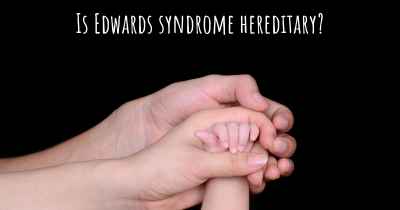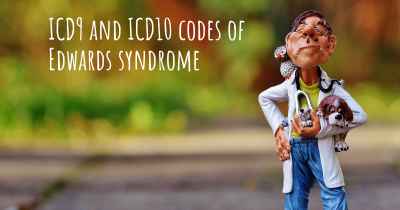What is the history of Edwards syndrome?
When was Edwards syndrome discovered? What is the story of this discovery? Was it coincidence or not?

Edwards syndrome, also known as trisomy 18, is a genetic disorder caused by the presence of an extra copy of chromosome 18 in the cells of an individual. It was first described by John Hilton Edwards in 1960, hence the name Edwards syndrome. This condition occurs in approximately 1 in every 5,000 live births and is more common in females than males.
The discovery of Edwards syndrome was a significant milestone in the field of genetics. Prior to its identification, the underlying cause of the characteristic features and severe developmental abnormalities seen in affected individuals was unknown. Edwards, a British physician, conducted extensive research and clinical observations to elucidate the distinct features and genetic basis of this syndrome.
Trisomy 18 occurs when there is an error in cell division during the formation of reproductive cells (eggs and sperm) or early in embryonic development. Instead of the usual two copies of chromosome 18, affected individuals have three copies in each cell. This extra genetic material disrupts normal development and leads to the various physical and intellectual disabilities associated with Edwards syndrome.
The symptoms and severity of Edwards syndrome can vary widely among affected individuals. Common physical features include low birth weight, small head (microcephaly), clenched fists with overlapping fingers, and a characteristic facial appearance with a small jaw, low-set ears, and prominent back of the head. Additionally, affected individuals often experience severe developmental delays, heart defects, kidney malformations, and other organ abnormalities.
The diagnosis of Edwards syndrome can be made prenatally through genetic testing, such as amniocentesis or chorionic villus sampling, which analyze the chromosomes of the developing fetus. After birth, a physical examination and additional genetic testing, such as a karyotype analysis, can confirm the presence of trisomy 18.
Unfortunately, Edwards syndrome is associated with a high mortality rate. Many affected individuals do not survive beyond the first year of life, and those who do often have significant health challenges. The condition is characterized by multiple organ system abnormalities, which can lead to life-threatening complications. However, with advances in medical care and supportive treatments, some individuals with Edwards syndrome have lived into their teenage years and beyond.
Treatment for Edwards syndrome focuses on managing the various medical issues associated with the condition. This may involve surgical interventions to correct heart defects or other structural abnormalities. Additionally, affected individuals often require ongoing medical care, including physical and occupational therapy, to support their development and improve their quality of life.
The prognosis for individuals with Edwards syndrome remains challenging. The severity of the condition and associated health complications can significantly impact life expectancy and overall well-being. However, advancements in medical understanding and supportive care have improved the outcomes for some individuals with this syndrome.
In conclusion, Edwards syndrome, or trisomy 18, is a genetic disorder characterized by the presence of an extra copy of chromosome 18. It was first described by John Hilton Edwards in 1960 and has since been extensively studied. The condition presents with a range of physical and intellectual disabilities, and unfortunately, has a high mortality rate. However, with medical advancements and supportive care, some individuals with Edwards syndrome have achieved longer lifespans and improved quality of life.








